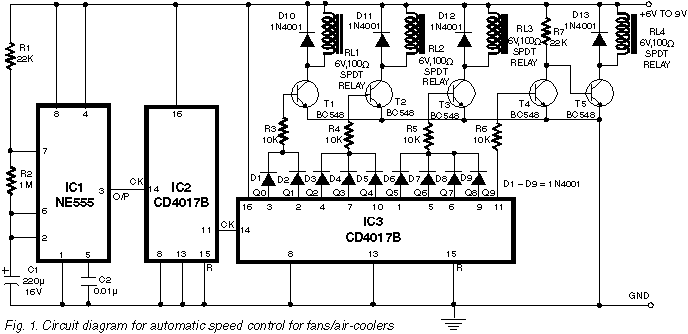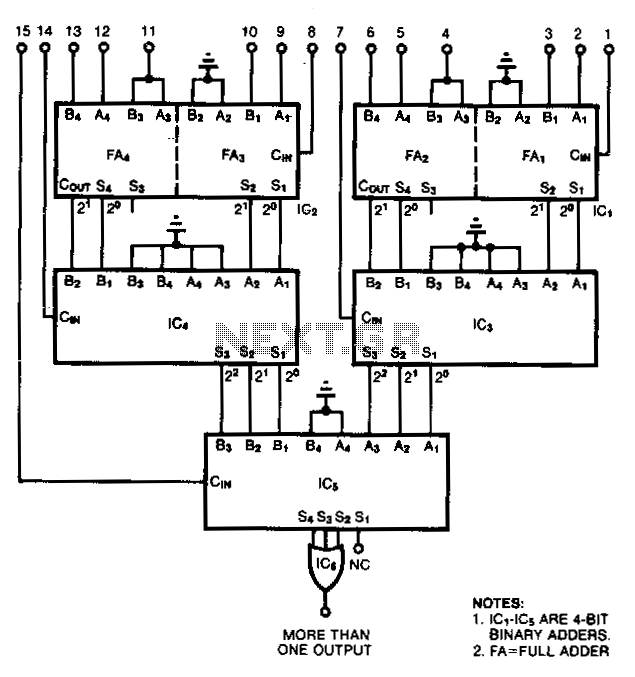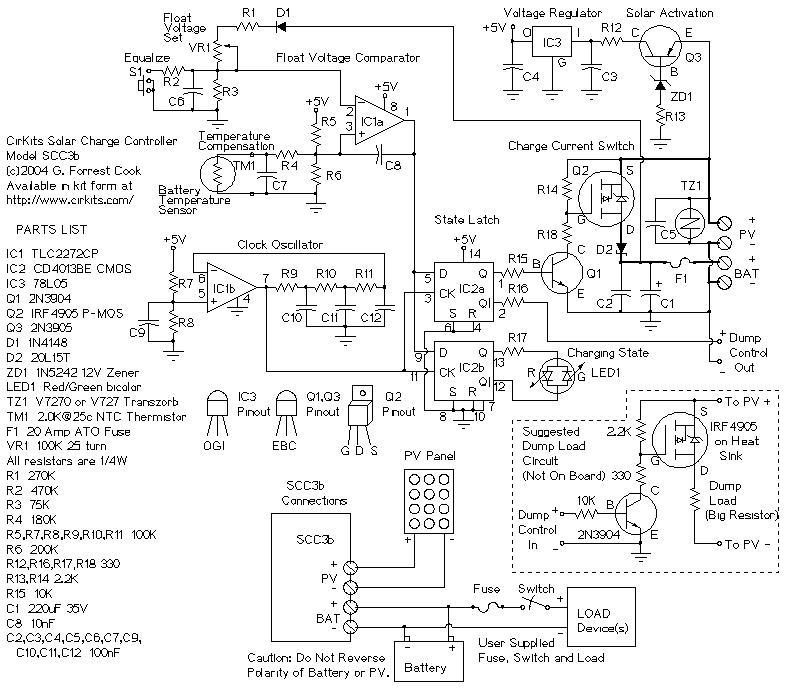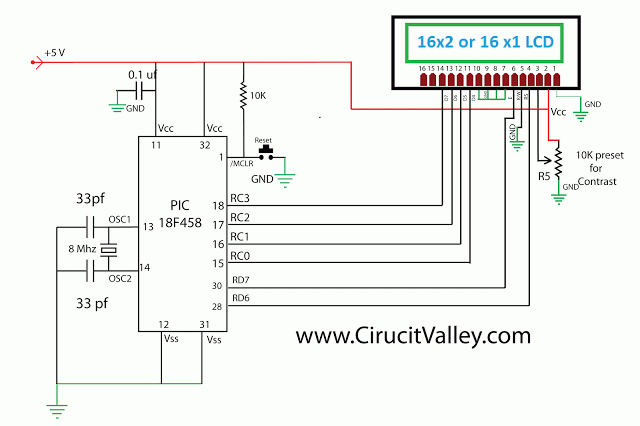
Telephone Line Controller
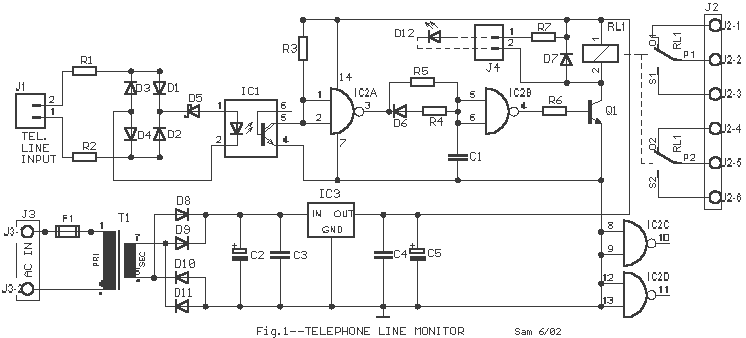
A very simple circuit that will find application in the case where you have a lot of telephones installed on a telephone line and would want to know if somebody of them is open. Thus, you will not be off any discussion. Simultaneously, it can cut the certain sound from a stereo amplifier that is in high volume, the sound of some television, or turn on some light at night when it rings the telephone and needs you to raise. There exists a pair of free contacts of RL1 that connects to the J2, which you can use to connect any appliance you want. The telephone line is connected at J1, with the polarity you want. When the telephone is closed, then the line voltage is roughly 48-50Vdc. This voltage turns on the photodiode, and this, in turn, activates the transistor of IC1, which simultaneously isolates the circuit from the telephone line. The phototransistor in IC1 is now in an ON state, the input of IC2A is LOW [L], and the output is HIGH [H]. Ignoring for a moment the delay circuit consisting of D6, R4, R5, and C1, the input of IC2B is also HIGH; hence the output is LOW, transistor Q1 is OFF, and RL1 is deactivated. When the telephone earphone is lifted, the telephone line voltage falls to 6-10Vdc. All the previous conditions are reversed, and RL1 turns on. The telephones that use dial choice, disk, or pulse systems can open and close RL1 during the duration of the choice. With the delay network that exists between the gates of IC2A and IC2B, the situation changes in the input of IC2B is delayed, ensuring stability in the operation of RL1. If R4 is set to 100K, then RL1 is activated when the telephone rings or when the earphone is lifted. Conversely, if R4 is set to 1M, then RL1 is activated only when the earphone is lifted. The circuit is supplied by a simple regulation circuit providing +12V.
The circuit operates by monitoring the status of multiple telephones connected to a single telephone line. The primary component for sensing the line status is the optocoupler (IC1), which isolates the control circuit from the telephone line. When the telephone is in use, the voltage drops significantly, triggering the photodiode within the optocoupler, which then activates the transistor. This action changes the state of the logic gates in IC2, controlling the relay (RL1) that can activate various appliances or indicators.
The relay contacts can be used to switch devices such as lights or audio equipment, allowing for a versatile application of the circuit. The inclusion of a delay circuit ensures that transient signals do not cause unintended activation of the relay, enhancing the reliability of the system. The choice of resistor values for R4 determines the sensitivity and responsiveness of the relay activation, providing flexibility based on the specific application requirements.
The circuit is powered by a regulated +12V supply derived from a transformer (T1) and a voltage regulator (IC3), ensuring stable operation despite variations in the input voltage. The use of standard components such as resistors, capacitors, diodes, and relays makes this circuit easy to assemble and integrate into existing systems. Proper consideration should be given to the ratings of the components to ensure they can handle the expected voltages and currents during operation. A very simple circuit, that will find application in the case where you have a lot of telephones installed on a telephone line and would want to know if somebody of them is open. Thus you will not be off any discussion. Simultaneously it can cut the certain sound from stereo amplifier that are in high volume, the sound of some television or turn on some light the night when it ring the telephone and needs him you raise.
Exists a pair of free contacts of RL1 that connects to the J2, which you can use connecting there any appliance you want. The telephone line connected in the J1, with what polarity you wants. When the telephone is closed then the line voltage is roughly, 48-50Vdc. This voltage turn on the photodiode and this, the transistor of IC1, which it simultaneously isolates, the circuit from the telephone line. The phototransistor in IC1 are now in situation ON, the input of IC2A are LOW [L] and output HIGH [H].
Ignoring for little the circuit of delay D6, R4, R5, C1, the IC2B input, are also this HIGH hence the output are LOW, transistor Q1 are OFF and the RL1 are deactivate. When the telephone earphone is raised, then the telephone voltage line fall in 6-10Vdc. All the previous situation is reversed also the RL1, turn on. The telephones that use for dial choice, disk or pulse system, can they open and close the RL1 at the duration of choice.
With delay network, that exist between in gates IC2A and in the IC2B, we delay the situation changes in the input of IC2B, ensuring thus stability in the operation of RL1. If the R4=100K then the RL1 is activated when the telephone ring or when the earphone is raised. On the contrary if the R4=1M, then the RL1 is activated only when the earphone is raised. The circuit supply becomes with a simple regulation circuit, in + 12V. Part List R1-2=36Kohm D1....4=1N4002 RL1=12Vdc 2X2 relay R3=100Kohm D5=1N5252 [24V 0.5W Zener] J1-4=2pin connector 2.54mm step R4=100Kohm or 1Mohm *See text D6-7=1N4148 J2=6pin connector 5mm step R5=2.2Mohm D8....11=1N4002 J3=2pin connector 5mm step R6=3.3Kohm D12=Red Led 3 or 5mm F1=Fuse 500mA [5x20mm] R7=1Kohm IC1=4N25 optocupler PCB mount for Fuse C1=100 or 220nF 100V MKT IC2=4011B C2=1000uF 25V IC3=7812 [1A] *All Resistors is 1/2W 5% C3-4=100nF 100V Q1=BD139 or BD679 C5=4.7uF 16V T1=12Vac 500ma tranformer for pcb
🔗 External reference
The circuit operates by monitoring the status of multiple telephones connected to a single telephone line. The primary component for sensing the line status is the optocoupler (IC1), which isolates the control circuit from the telephone line. When the telephone is in use, the voltage drops significantly, triggering the photodiode within the optocoupler, which then activates the transistor. This action changes the state of the logic gates in IC2, controlling the relay (RL1) that can activate various appliances or indicators.
The relay contacts can be used to switch devices such as lights or audio equipment, allowing for a versatile application of the circuit. The inclusion of a delay circuit ensures that transient signals do not cause unintended activation of the relay, enhancing the reliability of the system. The choice of resistor values for R4 determines the sensitivity and responsiveness of the relay activation, providing flexibility based on the specific application requirements.
The circuit is powered by a regulated +12V supply derived from a transformer (T1) and a voltage regulator (IC3), ensuring stable operation despite variations in the input voltage. The use of standard components such as resistors, capacitors, diodes, and relays makes this circuit easy to assemble and integrate into existing systems. Proper consideration should be given to the ratings of the components to ensure they can handle the expected voltages and currents during operation. A very simple circuit, that will find application in the case where you have a lot of telephones installed on a telephone line and would want to know if somebody of them is open. Thus you will not be off any discussion. Simultaneously it can cut the certain sound from stereo amplifier that are in high volume, the sound of some television or turn on some light the night when it ring the telephone and needs him you raise.
Exists a pair of free contacts of RL1 that connects to the J2, which you can use connecting there any appliance you want. The telephone line connected in the J1, with what polarity you wants. When the telephone is closed then the line voltage is roughly, 48-50Vdc. This voltage turn on the photodiode and this, the transistor of IC1, which it simultaneously isolates, the circuit from the telephone line. The phototransistor in IC1 are now in situation ON, the input of IC2A are LOW [L] and output HIGH [H].
Ignoring for little the circuit of delay D6, R4, R5, C1, the IC2B input, are also this HIGH hence the output are LOW, transistor Q1 are OFF and the RL1 are deactivate. When the telephone earphone is raised, then the telephone voltage line fall in 6-10Vdc. All the previous situation is reversed also the RL1, turn on. The telephones that use for dial choice, disk or pulse system, can they open and close the RL1 at the duration of choice.
With delay network, that exist between in gates IC2A and in the IC2B, we delay the situation changes in the input of IC2B, ensuring thus stability in the operation of RL1. If the R4=100K then the RL1 is activated when the telephone ring or when the earphone is raised. On the contrary if the R4=1M, then the RL1 is activated only when the earphone is raised. The circuit supply becomes with a simple regulation circuit, in + 12V. Part List R1-2=36Kohm D1....4=1N4002 RL1=12Vdc 2X2 relay R3=100Kohm D5=1N5252 [24V 0.5W Zener] J1-4=2pin connector 2.54mm step R4=100Kohm or 1Mohm *See text D6-7=1N4148 J2=6pin connector 5mm step R5=2.2Mohm D8....11=1N4002 J3=2pin connector 5mm step R6=3.3Kohm D12=Red Led 3 or 5mm F1=Fuse 500mA [5x20mm] R7=1Kohm IC1=4N25 optocupler PCB mount for Fuse C1=100 or 220nF 100V MKT IC2=4011B C2=1000uF 25V IC3=7812 [1A] *All Resistors is 1/2W 5% C3-4=100nF 100V Q1=BD139 or BD679 C5=4.7uF 16V T1=12Vac 500ma tranformer for pcb
🔗 External reference
Warning: include(partials/cookie-banner.php): Failed to open stream: Permission denied in /var/www/html/nextgr/view-circuit.php on line 713
Warning: include(): Failed opening 'partials/cookie-banner.php' for inclusion (include_path='.:/usr/share/php') in /var/www/html/nextgr/view-circuit.php on line 713
